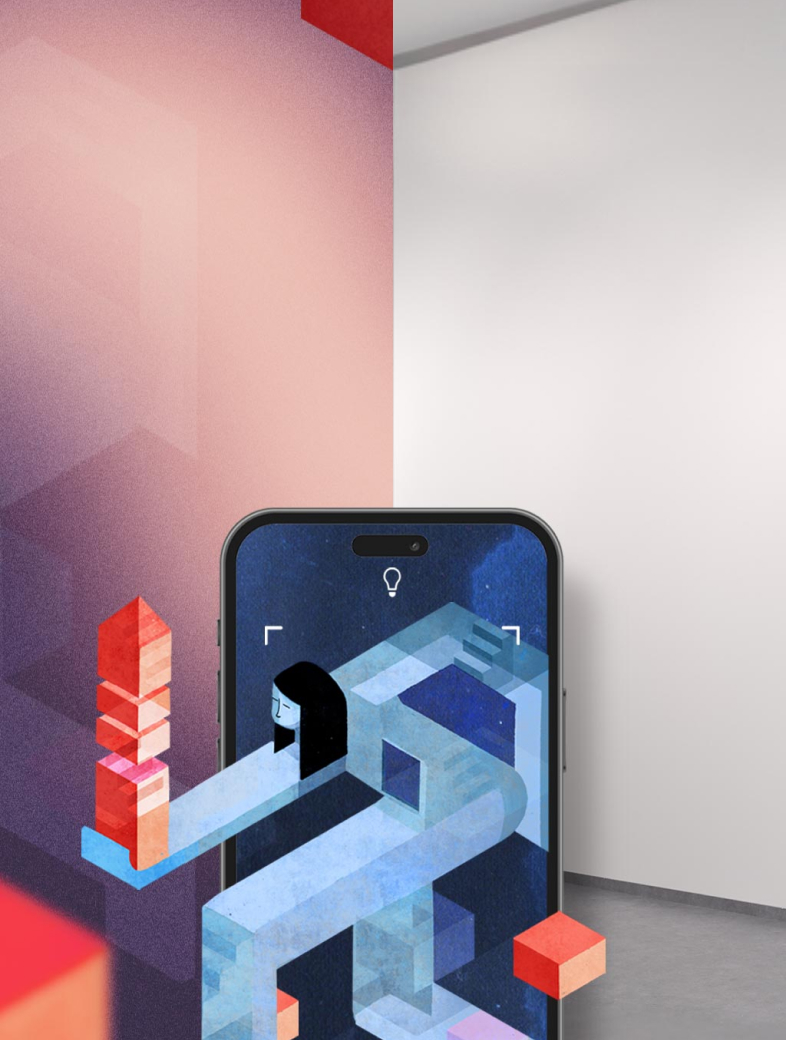Artist Interview: Claire Luxton
Public art is extremely important, it has a way of adding vibrancy, hope and dynamism to our urban spaces

Claire Luxton is a contemporary multi-disciplinary artist based out of the UK working with photography, installation, poetry, and painting.
Her latest project is a window display enhanced with augmented reality commissioned by L’Occitane for their flagship store on Regent Street in London. We got in touch with Claire to hear more about the project and how she has continued to create during the pandemic.
You have such an iconic visual style, how do you translate that when working on commissioned projects?
Thank you so much! I first like to research, brainstorm and mood-board my concepts, which allows me to create a visual diagram for both what the client/brand is looking for, and also for what I hope to inject into the project! I think over time I learned not to change myself for a project, but to translate my creative style to the brief. I think it is much easier now that I’m further along in my practice; people come to me specifically for my style, so that allows me to have full creative freedom, whilst working with and bouncing ideas off the client. This is something that can be quite difficult when you are first starting out. Personally, I find that you get the best results when you lead with your own personal aesthetic. Ultimately, the commissioned project flows so much better and the results are amazing.
What experience do you have with AR art and Artivive and what are the upsides and downsides for you when creating art that is enhanced with a digital layer?
I first came across Artivive when I was collaborating with Acrylicize on a project in London. I was so intrigued by this technology and the way I was able to bring our two-dimensional space into three-dimensional virtual reality. Since then, and especially over the last 8 to 10 months, I have seen even more need to include this type of technology in my projects. At a time when the public can’t go to exhibitions, can’t go to gallery spaces, it felt even more dynamic, to be able to bring my artwork into a reality that people can still experience from home or on our streets.
I also have experience using AR from when I worked on the competition for the United Nations to reimagine a poster for world peace. This was my first experience of reworking an original artwork and turning it into a virtual reality artwork. I loved looking at the piece from a new angle and driving thoughts in a different direction. As well as my project for L’Occitane, I also have some experience using AR art to create facial filters. Last year I created a ‘HOPE’ filter for Instagram and my work with the Artivive app, definitely informed me how I created this.
I was first approached by MTArt Agency and L’Occitane to work together to bring art to the Regent Street store! I have always felt that public art is extremely important, it has a way of adding vibrancy, hope, and dynamism to our urban spaces — and our rural spaces, for that matter. So yes, it has been something I’ve always wanted to do, and, especially over the last year during the global pandemic, it’s felt even more powerful to be able to bring art back to the public. I have loved the brand L’Occitane for a long time now and when MTArt said that they wanted to collaborate, it felt like the perfect meeting of minds to work on this outdoor exhibition.
Do you think that the pandemic has changed you as an artist and how you create? What lessons have you learned in this time?
If anything, I feel that a pandemic has amplified me as an artist. It was as if all of my passions and creative ideas were pushed to the forefront of my mind. Over the past 10 months, I have been my most productive self. Encouraged not to sleep on my ideas and to press forward with my passions and concepts to make them a reality.
How do you see the future of digital art? Do you think technology will reshape how we consume and create art?
I have seen more and more artists incorporating digital work into their practice over the past 12 months. I think in the same way that the Internet changed the way the world communicates and reshaped our lives, I think that digital art will 100 percent become part of normal Fine Art practice. Not necessarily just the way in which we create, but possibly the way in which we communicate, display and sell our work.
Are you planning on creating more AR art? What can we expect to see from you in the future?
Yes! I’m working on some more public art at the moment and obviously planning future exhibitions when they are able to open again. Moving forward, I will think about the way that I incorporate AR into my work at the point of creation. So from concept, as well as thinking about the way the work may be exhibited. I also have a large piece of public art that I have been working on with Westminster Council and the MTArt agency that will be launching hopefully in the spring-summer time being well. It’s a large-scale video projection that will be on Marble Arch in London.
Interested in creating augmented reality art? Sign up for free to our augmented reality tool.






